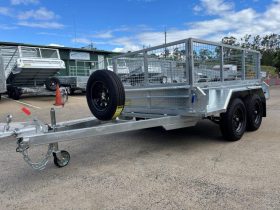Freight classes were designed so that when working with different brokers, warehouses and carriers, the same price would be quoted for shipping. These were made for commodities transported by less than truckload (LTL) freight shipping.
The National Motor Freight Traffic Association (NMFTA) defined freight classes, but they’re enforced by the National Motor Freight Classification (NMFC).
Commodities are grouped into one of 18 classes, which range from 50 to 500. The class is determined by using four characteristics: density, stowability, handling and liability. Rule of thumb: the lower the class number, the lower the freight charge will be.
- Density – This is determined by the weight and dimensions of the item.
- Stowability – This takes into account how the freight can be transported with other commodities. Is it flammable, perishable or hazardous? Also, consider the packaging, can it be stacked?
- Ease Of Handling – This is classified by the level of care. Is the product fragile, hazardous or does it need special attention?
- Liability – What’s the value in case of damage or theft? Probability of the item causing damage to other freight?
Density means pounds per cubic foot. You need to measure the height, width and length of the freight in inches and weigh it in pounds. Multiply height X width X length. Divide the total by 1,728 (the number of cubic inches in a cubic foot). Then, divide the weight (in pounds) by the total cubic feet. The total that you get is the pounds per cubic feet.
Now, when you look on the freight class chart, you will be able to easily put your shipment in the right class. The weight on the class chart is a weight range per cubic foot. It’s recommended to use a freight class calculator rather than trying to do the math yourself.
Part of the freight company’s job is to help you figure out the proper freight class for your shipment. This makes sure that you will get consistent shipping prices on future shipping.
Do not guess which class that your item belongs in, it will cost you. The freight carrier will re-classify the item, it’ll be hard to dispute and usually you’ll have to pay the difference without discount.











Leave a Reply